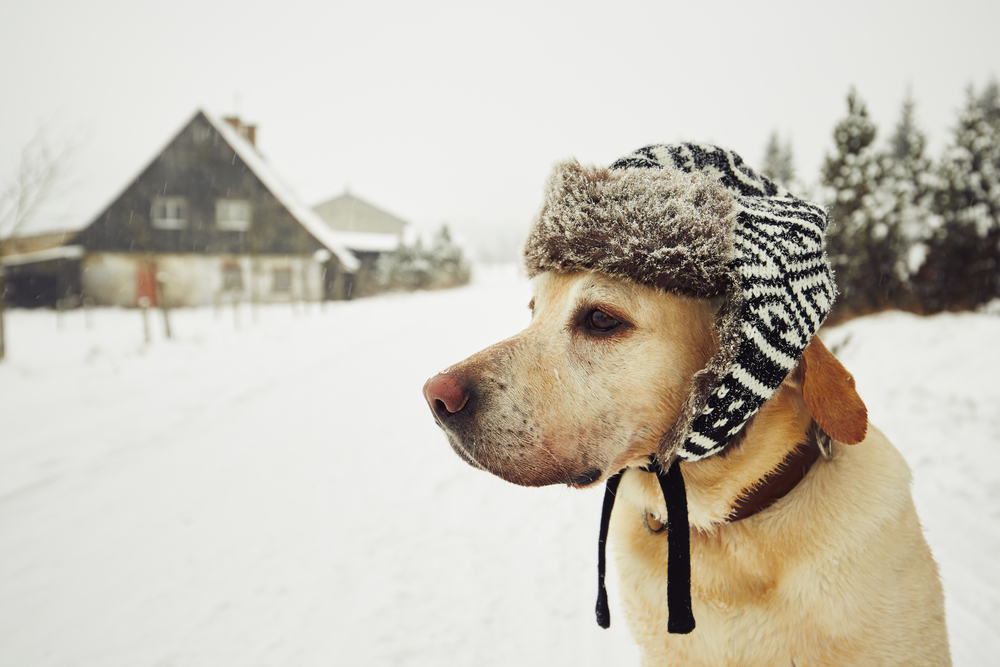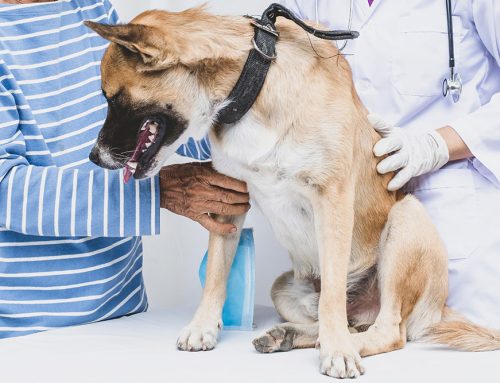Ohio’s winter brings chilly temperatures, icy sidewalks, and snow-covered landscapes, and while your four-legged friend may have a fur coat, pets are not immune to the cold. Whether you own a tiny Chihuahua who trembles at the first draft of cool air or a fluffy malamute who would spend all day in the snow if you let them, remember to take essential cold-weather precautions to ensure your furry pal stays safe, warm, and injury-free during the brisk winter months. Our Adamson Veterinary Services team shares cold-weather safety tips to protect your pet.
Know your pet’s cold tolerance
Understanding your pet’s tolerance for cold weather is the first step in keeping them safe. Pets’ tolerance varies based on the following factors:
- Breed and coat type — Some dog breeds have thick, insulating coats that are well-suited for cold weather, while others have short or thin coats that provide less protection. Breeds originating from colder climates tend to have better cold tolerance.
- Size — Small pets generally lose heat more rapidly than large pets because of their higher surface area-to-body mass ratio. Cats and small dogs may feel the cold more intensely.
- Age — Young puppies and kittens and senior pets, often have little tolerance for the extreme cold. Puppies and kittens may not have fully developed thermoregulation, while senior pets may have reduced metabolic rates and inefficient circulation.
- Health — Pets in good health and at an ideal body weight are generally more cold-tolerant than those with pre-existing health conditions or those who are underweight. Pets with health conditions, such as diabetes or hypothyroidism, which affect their ability to regulate body temperature, may be more sensitive to cold, and chronic conditions, such as arthritis, can worsen in cold weather.
- Activity level — Active pets generate body heat, which can help them stay warm in cold weather. In contrast, less active or sedentary pets may feel the cold more acutely.
Watch your pet for hypothermia and frostbite signs
Prolonged exposure to low temperatures can lead to frostbite and hypothermia in people and pets. Keep walks and outdoor playtime brief and supervised, especially during frigid conditions, and always bring your pet inside if the weather turns severe. Mild hypothermia begins to set in when your pet’s temperature drops below 99 degrees. Watch your pet’s behavior and body language during outdoor activities for the early signs, including:
- Lethargy
- Delayed reflexes
- Slow, shallow breathing
- Dilated pupils
- Collapse
Frostbite can also occur when pets are exposed to cold temperatures for extended periods, causing the blood vessels to constrict, which redirects blood away from the extremities to warm and protect the vital organs, including the brain, lungs, and heart. Your pet’s nose, tail, ears, and paws are most susceptible to tissue damage because of this protective reaction. Frostbite signs include:
- Brittle or shriveled skin that stays cold to the touch
- Skin that is initially pale or bluish-white, and then becomes red and puffy
- Red or grey-tinged skin on the ears, tail, or nose
- Ears, tail, paws, or nose painful to the touch
- Ice crystals in or around the nose
If your pet has frostbite signs, immediately bring them inside and cover them with a dry, warm blanket or towel. Then, contact our Adamson Veterinary Services team or your nearest emergency veterinary hospital for guidance.
Protect your pet from the elements
Like people, pets can benefit from extra layers during chilly walks or outdoor playtime. Before braving the cold with your pet, consider outfitting them in a pet-friendly winter coat or sweater to help keep them warm. Select pet clothing that fits well and covers most of their body, but does not obstruct their breathing or restrict their movement. Ice and cold can be especially hard on your pet’s paws because the long hair between the paw pads can accumulate ice, snow, and chemicals that can cause discomfort and irritate the skin. Protect your pet’s paws by trimming the fur between their paw pads, and wiping their feet when they come in from the snow and ice. Pet booties are another great option for winter paw protection if your pet tolerates this footwear.
Store antifreeze out of your pet’s reach

Antifreeze, which is used during the colder months to winterize cars and homes, is toxic to pets because of its ethylene glycol content. Ethylene glycol, a sweet-tasting substance, is extremely hazardous when ingested, even in a small amount. This sweet flavor can be particularly enticing to pets, leading them to drink antifreeze if it is accessible. A pet’s initial antifreeze poisoning signs can appear mild and may include signs such as vomiting, lethargy, and incoordination. However, as the poison progresses, it can lead to severe kidney failure, often within 24 to 72 hours. This kidney damage can be fatal if not treated promptly. To prevent your pet from accidentally ingesting this life-threatening substance, regularly check for spills around your car, keep your pet away from parked vehicles, and store unused antifreeze out of your pet’s reach.
Our Adamson Veterinary Services team is here for your pet all year long, including the cold winter months. Contact us if you have any questions about protecting your pet from cold weather or to schedule their wellness visit.







Leave A Comment